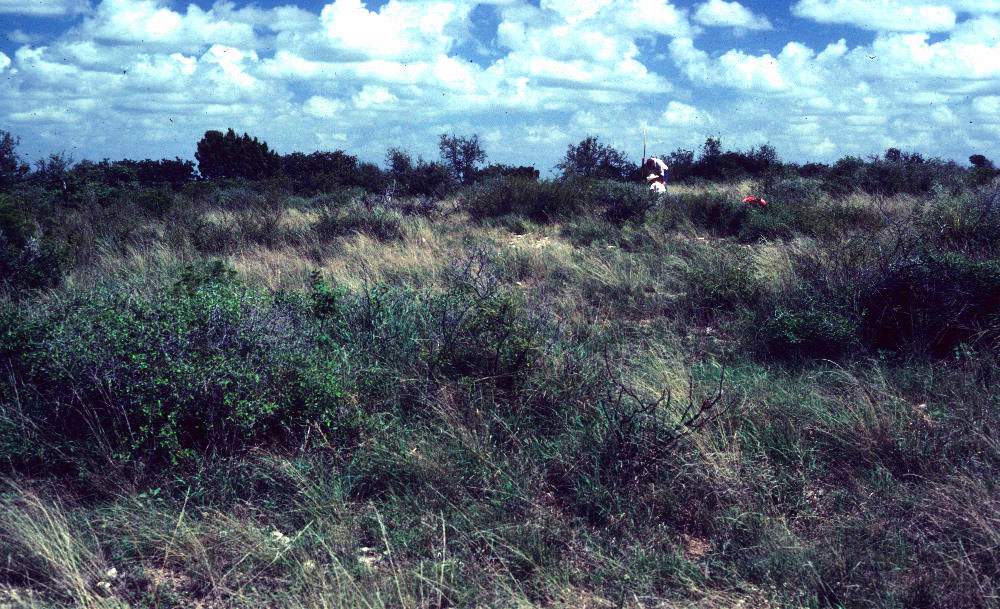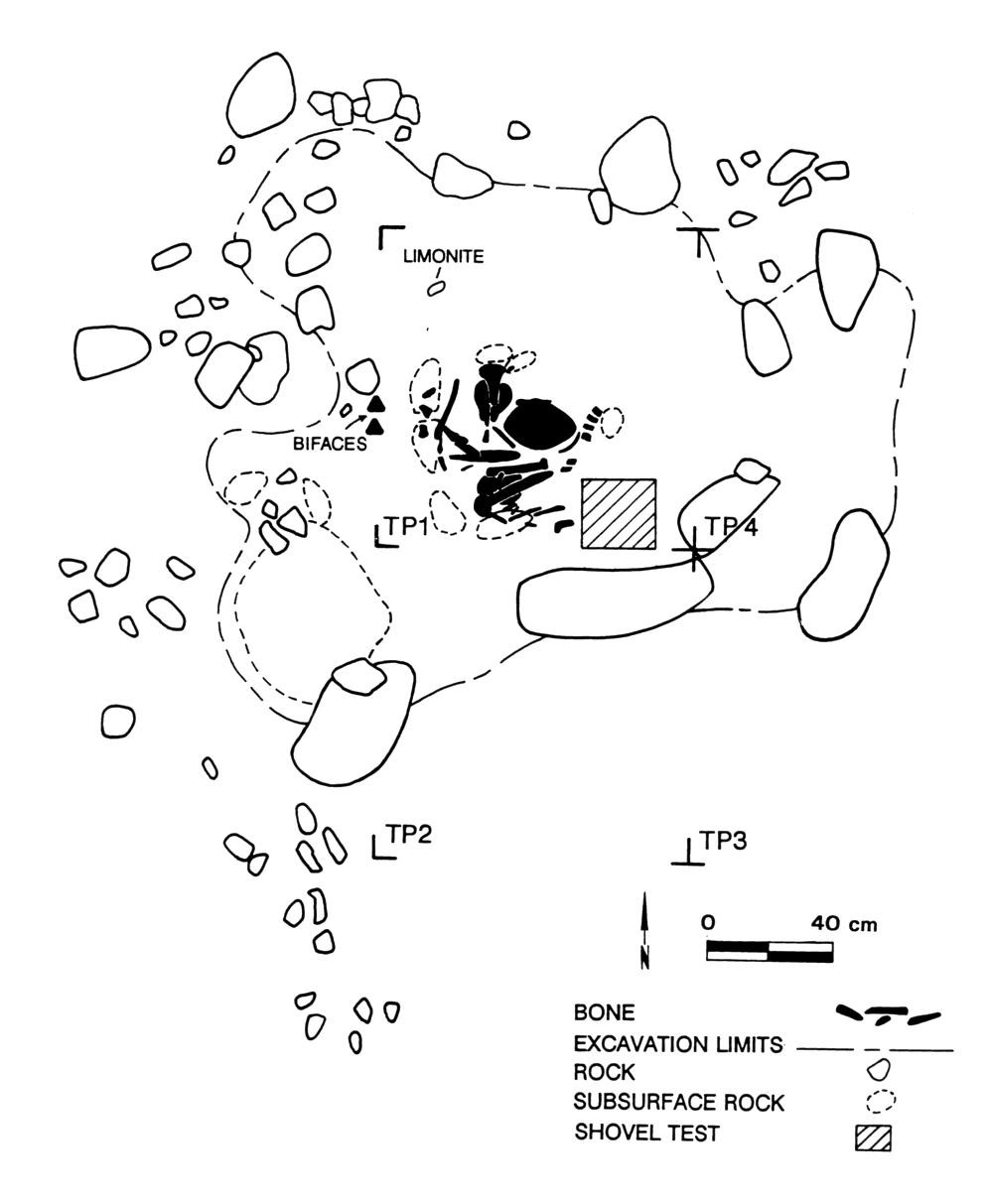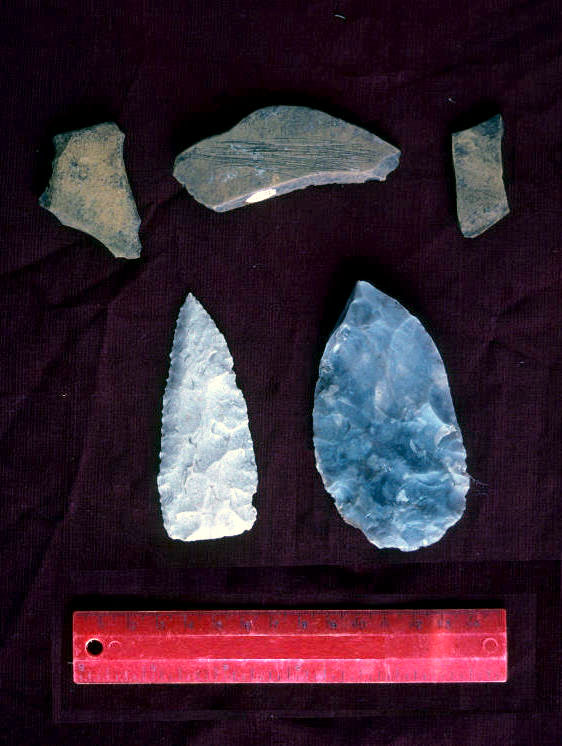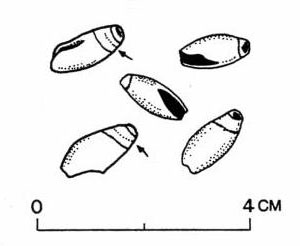Site 41CC237 |
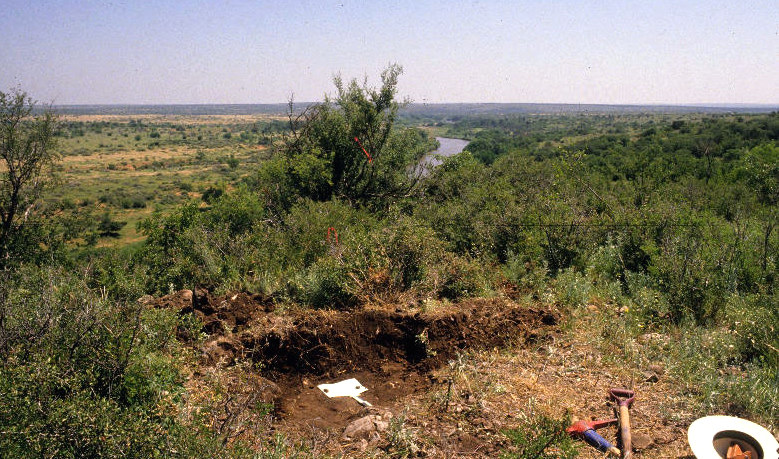
Site 41CC237, a cairn commanding a spectacular view of the Colorado River floodplain. TARL Archives. |
Site 41CC237 is an isolated burial cairn containing the remains of two individuals, an adult and child. Located on a high bluff rim along the upper Colorado River, near its confluence with the Concho, the site was notable for its spectacular view of the river valley. Recorded by Prewitt and Associates, Inc., during the survey phase of recreation areas for the Stacy Reservoir project, the site was tested by Mariah Associates archeologists during the subsequent 1989 cairn assessment program. (Stacy Reservoir later was renamed O.H. Ivie Reservoir.) Although distinguishing the cairn stones from natural limestone was difficult, a noticeable attribute of the cairn was a slight mound which rose about 30 cm above the bedrock. Stones in the mound feature ranged from 5 to 45 cm in diameter. Excavations revealed the cremated remains of a child roughly 10-15 cm above the articulated remains of an adult male. Absence of scorching on the adult's bones strongly suggested the child had been cremated elsewhere. The man appears to have been placed in flexed position within a shallow pit, then covered with backfill and rocks. Several small cobbles resting on bedrock formed a rough circle around the burial. There were several indications that the adult burial was not primary. Certain elements were not in correct alignment (e.g., the long bones and extremities were southwest of the cranium and the vertebral column was articulated below and to the east of the cranium), and numerous elements (e.g., mandible, both scapulae, right femur, right patellae, etc.) were missing. For these reasons, it was determined that the skeleton was not in its original position, but rather had been reburied in the cairn from another location. Said differently, the burial was a secondary interment rather than a tightly flexed primary interment. Within the burial cairn, archeologists found a rich array of cultural materials including 9 chipped-stone tools made of Edwards chert, a handful of debitage, several pieces of limonite and hematite (mineral pigment), 18 Olivella shell beads (recovered during screening of the fill), freshwater clam shells, land snails, and a small quantity of animal bones (deer, rabbit, and fish). Among the stone tools were two thin bifaces, one with serrated edges, a side scraper, an end scraper, and flake tools. The limonite slab was found in four refittable pieces; striations and smoothing patterns suggested it had been used, broken in two, and further used at the cairn. The deep scratches likely represented scrapings of mineral powder from the limonite, possibly for a burial ritual. Four species of freshwater clams also were scattered throughout the burial fill; only three shell fragments showed indications of burning or heat alteration. Twelve of the Olivella shell beads had ground spires and four contained a faintly incised line paralleling the upper whorls. The presence of these marine gastropod shells in the burial indicates contact with peoples far afield or trade networks. Physical anthropological studies on the human remains indicated that the burned bones were from a four-to-five-year-old child (based on a single incisor tooth and certain bone fragments), and the adult was a male, aged 20-25 years. A v-shaped incision on the interior surface of a rib fragment suggested possible dismemberment. Based on a study of C12/C13 fractionation from bone collagen from the adult male, his primary diet was deer, nuts and berries. Radiocarbon dating on a collagen fractionation sample from the adult left femur, indicates the age of the burial was approximately 1500 years (1525+/-145 B.P.). This date falls within the latter part of the Late Archaic or the beginning of the Late Prehistoric I period. Whether the interments of the adult male and the cremated remains of the infant occurred at the same time is not known. The burial events could have occurred together or many years apart. |
|
